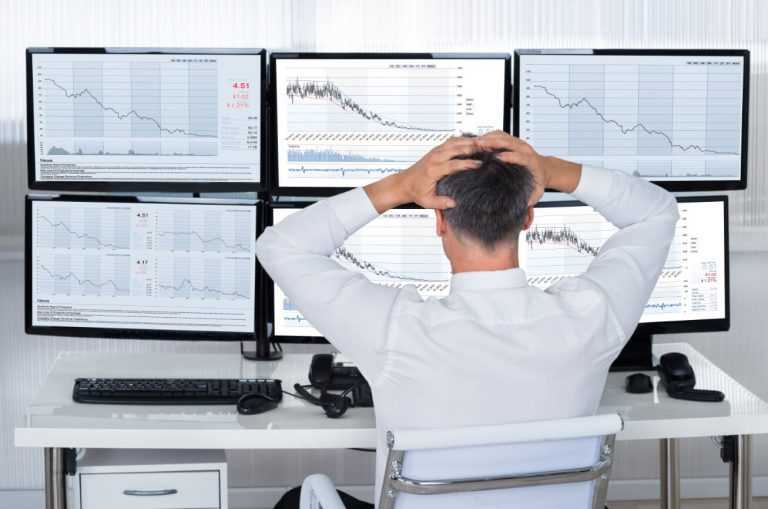If you are like me and initially got into trading through the crypto boom, you may have also fell victim to the delusions of grandeur. You may have seen videos on Youtube, or Images on Instagram with a person with a nice office, 6 different monitors, claiming you can learn all of trading within a week, or perhaps turn $100 into $10,000 in three simple steps.
As a result, this gives many new traders get the wrong impression of trading, as they have been grossly misinformed about the level of commitment that must be attributed to understanding the markets and the risks that can come with it. This lack of knowledge will result in traders making decisions, that with the benefit of hindsight, they wish they had not made, which in turn results in loss of money.
This is the very reason I have chosen to make this article and address the three main culprits of unsuccessful trading I have found during my time in trading, which I will go through in detail in the following sections. But before we get to that, let’s look at one of the biggest problems with trading, a lack of understanding of how to identify an opportunity.

Remember the other side of the coin to opportunity is risk, so you must choose your opportunity wisely. In order to find such an opportunity, you as a trader have two weapons at your disposal.
Technical Analysis, which simply refers to the trading tools working to calculate securities in order to find trading opportunities by analysing statistics and other metrics from trading activity, such as price movement and trading volume.
You may have used some of these technical analysis tools on the platform, or even used multiple indicators such as Relative Strength Index (RSI) and the Bollinger Bands (BB) to give cross indication.

As good as the technical analysis tools are, many professional traders would argue that good technical analysis needs to be used in conjunction with fundamental analysis of at least the same level.
Fundamental Analysis is essentially keeping up to date with global news and events in terms of political, economic and monetary policies being amended. Whether you trade stocks or Forex, you will need to pay attention to what the world leaders and corporations have to say, whether the news is good or bad remains irrelevant. What is relevant though, is that this will certainly impact the market and the instrument you are trading. If you have trouble following the news of keeping up to date, try this article which fully explains market analysis and how to access it on our platform by our very own and very talented Marios, or if you prefer, here is a helpful webinar link to demonstrate visually what Fundamental Analysis.

Both forms of analysis need to be used in harmony with one another.
I often use the analogy of thinking of yourself as a pilot, doing pre-checks before a flight. Ask yourself this, would you feel comfortable in a flight where the pilot and his crew did not perform the necessary checks to the engine, or if the pilot is flying without consulting the coordinates first on a map. Would you feel safe? Of course not! It is simply a massive risk.
Again think of yourself as a pilot, and your destination is the Volatility Island. Of course you could fly there, without doing your checks (Technical Analysis), or without consulting the whereabouts or location (Fundamental Analysis) of Volatility Island (Volatility), but it will be risky and will cost a lot in fuel, and a traders’ fuel is money.
So would it not be best, before you take off, to find the most direct, cost effective route, take into account potential storms (political tensions) and carry out all of your checks, so that you are not overwhelmed by surprise factors you did not anticipate when making a decision to trade.

Now back to the troublesome trilogy of unsuccessful trading. Over the course of my career, I have deduced that unsuccessful trading is simply down to these 3 factors:
Money Management – seems obvious, but there is an awful lot more to it. You simply need to change your trading perspective, from trading offensively, to trading defensively. What do I mean by that?
Well , think how you got the money in the first place, the hours you worked, the effort you put in. You should want to protect it. Many professional traders do not play aggressively, simply put, they carry out extensive and comprehensive analysis, assess their appetite to risk, and then invest accordingly. And, as a result, you will be able to trade with less stress.
Risk Mitigation – quite simply, this is the analysis a trader carries out before placing a trade. A trader will assess the potential for losses in an investment and trade accordingly based on these findings. Your goal should not be to make money, but not to lose it!
Trading without emotions (catching a falling knife) – this is the most notorious culprit of unsuccessful trading, and it can make a trader forget all of the analysis, all of the rules they trade by and make irrational decisions. This can either be a trader losing a trade, and trying to win back the loss. Or a trader trading successfully and trying to make more, regardless of analysis. This can simply be avoided by disciplined money management and comprehensive risk mitigation.
If you would like to learn more about any of the information discussed, in particular how to avoid these please let me know down below. Or alternatively, if you have an account manager with IQ Option, feel free to ask them for more information or even take part in one of many training and development sessions.
Information regarding past performance is not a reliable indicator of future performance.

